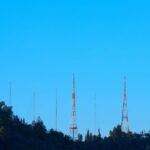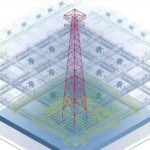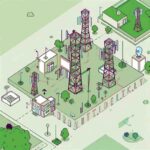

Have you ever wondered why you can stream a film on your phone while riding through the city, but sometimes lose signal in some places? This is not magic – this is the result of careful, strategic RF planning, a crucial part of wireless network design that keeps us all connected.
Nowadays, where reliable connectivity is no longer a luxury but an expectation, understanding RF planning is more important than before for telecom operators, infrastructure providers, and even businesses deploying private networks.
What is RF Planning, exactly?
RF Planning, short for Radio Frequency Planning, is the process of designing a wireless network to provide the best possible coverage, capacity, and quality of service. All this is about to find out how radio waves travel through different environments — whether it’s a bustling city center, a suburban neighborhood, or a remote rural area.
In simple terms, it’s like being an architect for invisible highways in the air. Without solid RF planning, you get dropped calls, dead spots, slow data, and unhappy customers.
You may also like: “Why Smart Wireless Network Design Is the Backbone of Modern Connectivity”
Why RF Planning Matters
Think about it: the radio spectrum is finite. Every wireless device — your phone, your smartwatch, your home router — needs a slice of this spectrum. If networks are not planned conscientiously, they interfere with each other, wasting Valuable bandwidth and leaving gaps in coverage.
Good RF planning ensures:
Stable Coverage: Users can stay engaged wherever they go.
Sufficient Capacity: The network can handle many users and high data traffic, especially during peak times.
Interference Management: Neighbors’ cells do not clash and disrupt signals.
Cost Efficiency: Operators get the best performance without overseas in unnecessary infrastructure.
Major Steps in RF Planning
So, how does it work in practice? Let us break it down into the essential stages that an RF planner follows:
1. Understanding the Environment
There are no two areas the same. Hills, trees, buildings, and even weather can impact how radio waves move. That’s why the first step is gathering detailed data about the physical environment and user distribution.
Site surveys, maps, and digital terrain models are all used to build a clear picture.
2. Propagation Modeling
This is where the science kicks in. Engineers use propagation models to guess how signals will behave. Models such as Hata, Okumura, or Longley-Rice help estimate the strength of the signal, taking Challenges and distance into account.
This modeling helps planners decide where to place towers and antennas to fill coverage gaps.
3. Link Budget Analysis
A link budget estimates how much power a signal loses because it travels. This includes everything from the transmitter’s power and antenna gain to path loss, fading, and interference. Target? To ensure that the signal reaching the user’s device is still powerful enough for clear connections.
4. Frequency Planning
Since the spectrum is limited, operators must reuse frequencies without self-interference. Frequency reuse patterns and careful channel allocation make it possible — especially important in dense urban networks.
5. Network Design & Site Selection
With all this data, the RF planner designs the network layout — deciding how many cell sites are required, where to keep them, what instruments to use, and how to configure antennas. This phase balances engineering needs with realistic factors such as local rules, cost of lease, and community effects.
6. Simulation and adaptation
Modern RF planning is not on paper alone. Planners use special software devices to simulate various scenarios. These devices help in fine-tuning parameters such as antenna tilt, power level, and neighboring lists to achieve the best balance between coverage and capacity.
Real World Challenges in RF Planning
Despite all the technology, the RF plan comes with challenges. Urban areas develop continuously – new buildings can block signals and changes the user behavior can overload parts of the network. Mobility also adds complexity: people do not install, and the network must be adapted to users.
Emerging technologies such as 5G and IOT bring additional layers. For example, 5G networks use high frequency bands, which can provide rapid speed but can cover short distances and have difficulty entering buildings. This requires an intensive, more accurate plan.
Why Work with an Expert Partner?
RF planning is not a one-time task — it’s a continuous process. There is a need to monitor and adjust the network as the user’s demand rolls out shifts and new techniques.
At ASE Structure Design, we specialize in providing tailored RF planning and wireless network design services. Our Skilled team understands the unique hurdles of modern networks, whether you’re extending an existing 4G network, rolling out 5G small cells, or building private wireless systems for industrial sites.
We combine deep industry knowledge with advanced tools to ensure every project achieves optimal coverage, capacity, and cost efficiency.
Final Thoughts
Reliable wireless connectivity doesn’t just happen — it is built on a foundation of thoughtful, data-driven RF planning. As the world is more connected, the quality of that plan will define the quality of our digital life.
If you want to strengthen your network design and provide extraordinary service to your users, partnering with the right experts makes all the difference.
Are you ready to take your wireless network to the next level? Contact ASE structure Design to learn how our RF planning services can help you stay ahead in this rapidly evolving landscape.
Latest News



